Gerard Ceunis was born in in 1885 in Ghent, Belgium. Situated in the Flemish region of the country, Ghent (Dutch = Gent, French = Gand, medieval English = Gaunt), is the capital and largest city of the province of East Flanders, and the third largest city in the country, after Brussels and Antwerp. A port and university town, in the late Middle Ages Ghent was one of the largest and richest cities in Europe, its prosperity based largely on the textile industry, which revived in the eighteenth and nineteenth centuries. Much of the city’s medieval centre and many of its historic buildings have been preserved. As described in the previous post, Ghent in the late nineteenth- and early twentieth centuries – the Belle Époque – was a hub of literary and artistic activity and innovation, home to writers like Maurice Maeterlinck, and as Christophe Verbruggen notes, the setting for a ‘complex tangle’ of literary and artistic movements, magazines and associations.
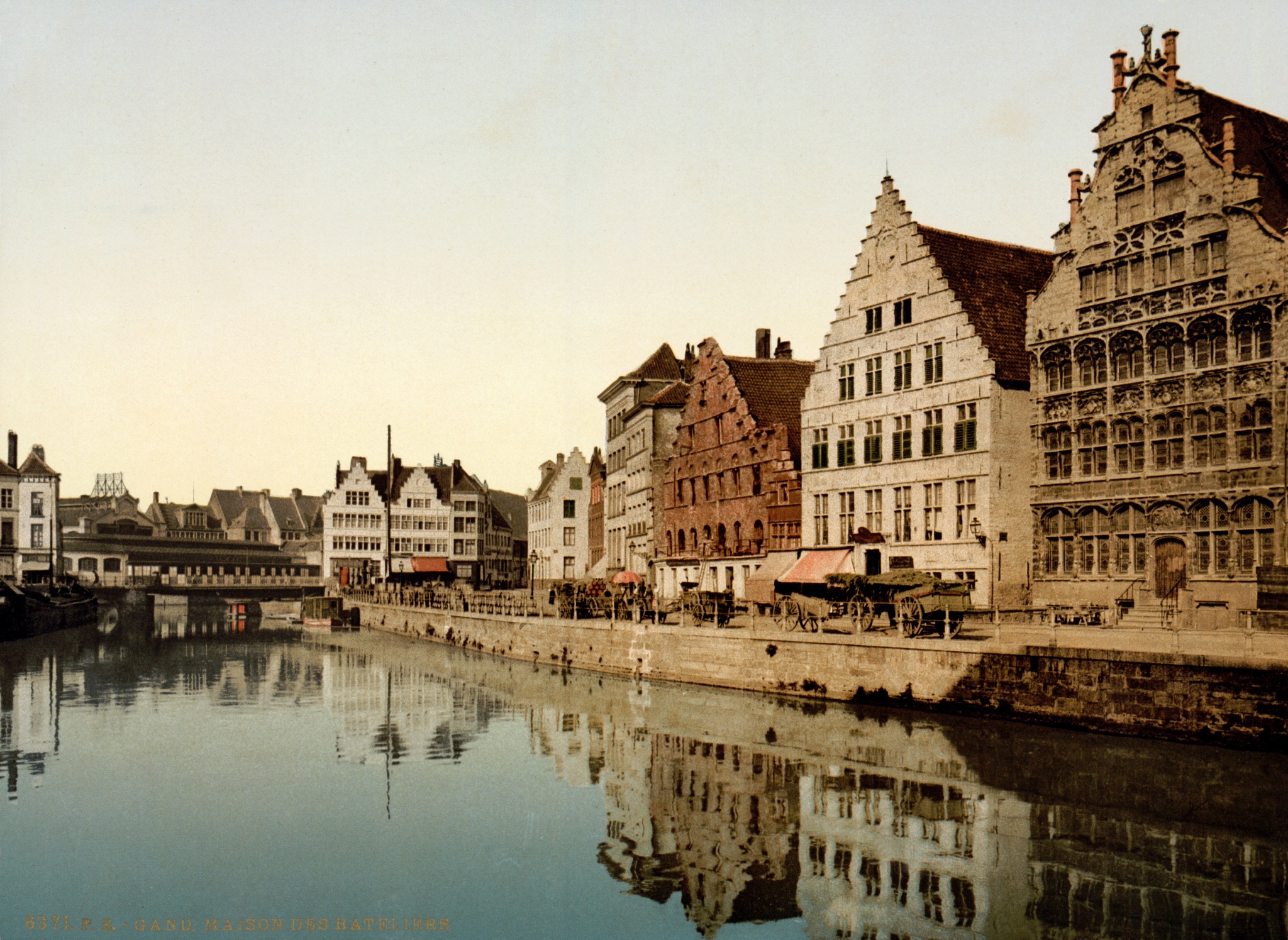
Ghent in 1900 (via wikimedia.org)
According to at least one source, Gerard Ceunis’ father was Prosper John Ceunis, who worked (as did his son for a time) in a printing house. I don’t have any other information about Ceunis’ family of origin: for example, his mother’s name, or whether he had any brothers or sisters. The previous post provided a thumbnail sketch of Ceunis’ early life and education. Another source gives a useful list of the addresses at which he lived in Ghent. Apparently he was born in the Dekstraat , but in 1886 the family moved to Baliestraat, then in 1877 to Hertstraat, in 1890 to Bagattenstraat, in 1891 to Zwijnaardsesteenweg and in 1900, when Ceunis was fifteen, to Ottergemsesteenweg. Here he remained until 1909, apart from two short breaks: he was in Lübeck, Germany in 1907 and Liège in 1907-1908.
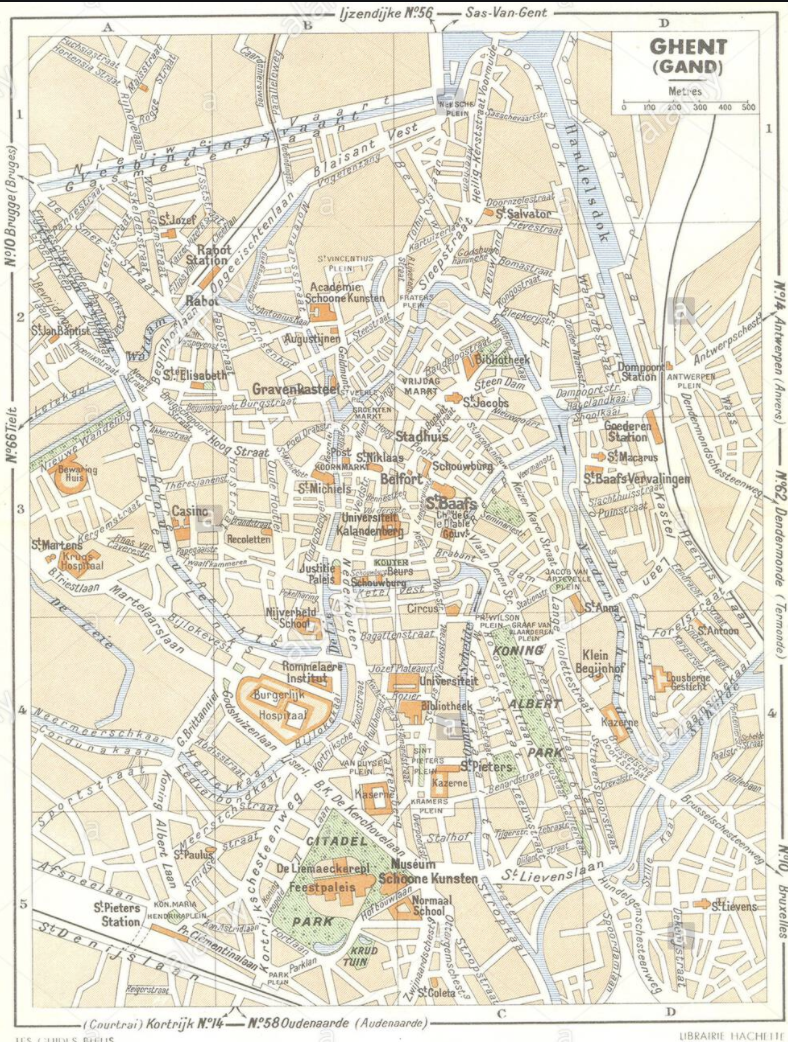
Old street map of Ghent
From 1910, when he was twenty-five, Ceunis lived in Baudelostraat and from 1912 in Mercatorstraat. I’m not absolutely sure when Gerard Ceunis married Alice Pauline Vandamme, but it was probably around 1910, since their daughter Vanna was born in 1911.
Gerard, Alice and Vanna Ceunis emigrated to England in 1914, presumably to escape the German occupation of their country, which took place in August of that year. On arriving in England, Ceunis seems to have exchanged his dream of pursuing ‘la vie bohème’ (see the previous post) for bourgeois respectability, making a comfortable living from his clothing shops. Why he took this decision, and how he raised the capital or acquired the knowledge necessary to make a success of the business, is not known. Nor do we know what his wife Alice, a former member of the radical Reiner Leven association and the feminist ‘Die Flinken’, thought of this move, especially when (as Christophe Verbruggen reports) he later left the running of the shops to her so that he could devote himself to ‘painting and philosophising’.
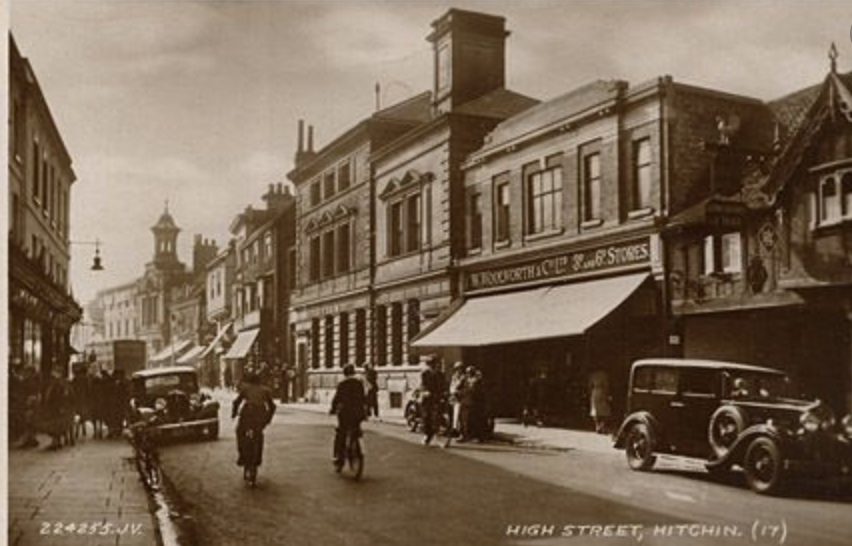
Hitchin in the 1930s
Neither is it clear why the Ceunises decided to make their home in Hitchin, a small market town in north Hertfordshire, nor whether they settled here immediately on their arrival in the country. The first record I’ve found that places Gerard Ceunis in Hitchin is an electoral register from 1927 which links him to an address in Church Street, Enfield, in north London, but gives his ‘abode’ as 7 Market Place, Hitchin – as noted in an earlier post, this was the address of Maison Gerard, Ceunis’ shop in the centre of the town. From this we learn two things: firstly, that at least initially, the Ceunis family lived ‘over the shop’ in Hitchin. Secondly, that Gerard owned more than one shop, including one in Enfield. He, and in some cases Alice, also feature in electoral registers for Enfield in 1930, 1932 and 1937. Evidence from electoral registers in 1938 and 1939 also suggest that Ceunis had premises in Green Lanes, Southgate.
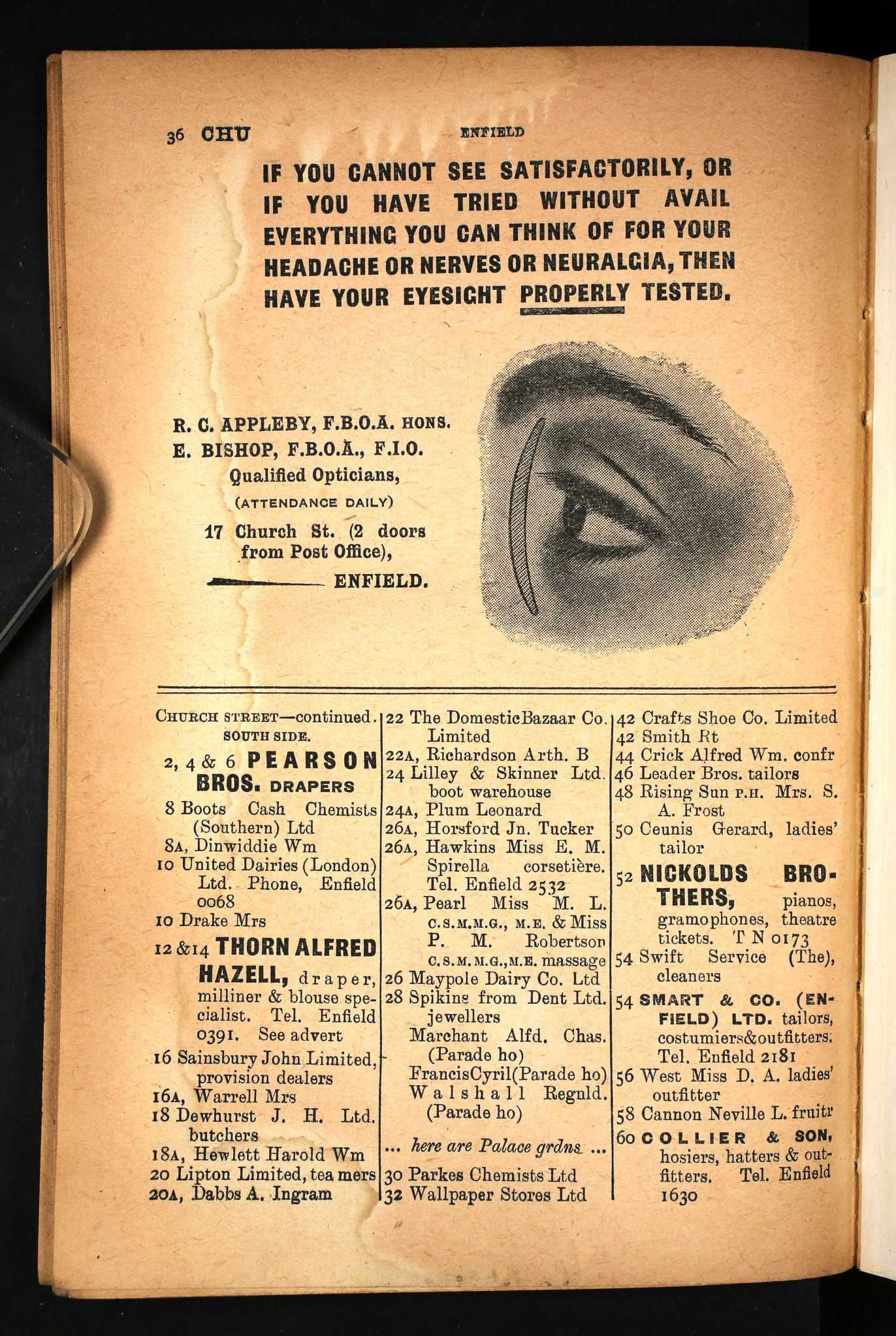
Extract from Enfield and Winchmore Hill Directory, 1930, showing Ceunis’ shop at 50 Church Street
From 1932, the London electoral registers begin to give the address of Gerard Ceunis’ main ‘abode’ as ‘Salve’, Gosmore Road, Hitchin. (I assume the house was named for the Latin greeting.) This would remain the family home for the remainder of Gerard’s and Alice’s lives: it is the address on his probate record from 1964 and hers from 1967. When the announcement of their daughter Vanna’s engagement appeared in the newspaper in 1934, her parents’ address was given simply as ‘Salve, Hitchin’.
Gosmore Road is on the southern side of Hitchin, connecting the town with the picturesque hamlet of Gosmore, famous as one of the locations where John Bunyan preached in secret in the seventeenth century. Most of the houses along this road were built since the Second World War, and when the Ceunises arrived here in the 1930s, or perhaps before, it would have been a quiet country road, with the parkland belonging to Hitchin Priory (formerly a Carmelite monastery but by then a grand private house and today a hotel) on one side, with views to the Chiltern Hills beyond.

Map of the southern part of Hitchin in the early twentieth century
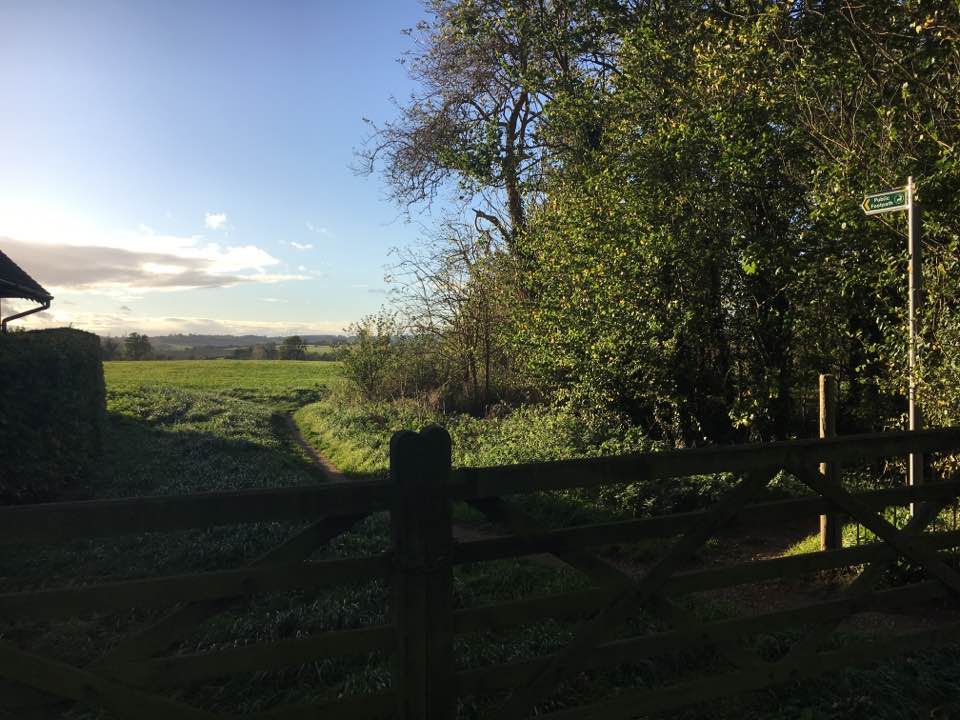
Priory Park from Gosmore Road, Hitchin (author’s photograph)
On the other side of the road – the left-hand side as you come from the town – are a small number of large houses built before the War, one of which I assume is (or was) ‘Salve’. Frustratingly, none of the records that I’ve seen give a number for the house, making it harder to identify. The only clue is the description of the house in one account as ‘stylish’. Another is that Jean Watts, in her history of Hitchin Art Club, whose 1956 painting competition Ceunis judged, states (inaccurately) that he lived in London Road, from which Gosmore Road diverges at its northern end, suggesting that his home may have been closer to the ‘town’ end of the road. Whatever its precise location, and as can be seen from the map above, the Ceunis’ would have been within walking distance of the town, with its church tower, where their summer visitor, the young Belgian writer Johan Daisne, sat ‘staring endlessly down at the summer opulence’ and the cemetery where he wandered, ‘dreaming among the graves’.
The character of the area changed dramatically in the mid-1960s, soon after Gerard Ceunis’ death, when a new bypass – Parkway – was cut through the area, requiring, I believe, the demolition of a number of properties. It crossed my mind that ‘Salve’ might have been among them, but then I came across a legal repossession order for 1973 that mentioned the property, which suggests that it is still standing , albeit possibly under a different name.
I’m writing this post during the coronoavirus lockdown, which makes it difficult to pursue the matter further for now. However, once conditions change, I shall take a walk in the direction of Gosmore Road – just five minutes from where I’m writing this, and one of our popular walking routes in normal times – and see if I can determine which of the houses was ‘Salve’, and home to Gerard Ceunis.
A note on pronunciation
I wonder if Gerard Ceunis gave his outfitter’s shop in Hitchin the name ‘Maison Gerard’ (and even, as on a second sign above the shop, the more English ‘Gerard’s’) because he thought his surname would be too difficult to pronounce – or that his customers wouldn’t be sure how to pronounce it? I imagine that most English speakers, on seeing the name ‘Ceunis’ for the first time, are tempted to pronounce it ‘Kyew-nis’. However, if Google Translate is to be trusted, then the Dutch pronunciation should be ‘Keuh-nis’, while the French version would be closer to ‘Seuh-nee‘, with the stress on the second syllable. So which is correct? Does Ceunis’ choice of a French name for his shop, and the fact that he and Alice styled themselves in at least one record ‘M. and Mme. Ceunis’ suggest that, by contrast with his literary hero Maeterlinck, a Dutch/Flemish speaker who wrote in French, Ceunis was a French speaker who wrote in Dutch/Flemish? I’d be interested to hear from anyone who can help to resolve this question.
















